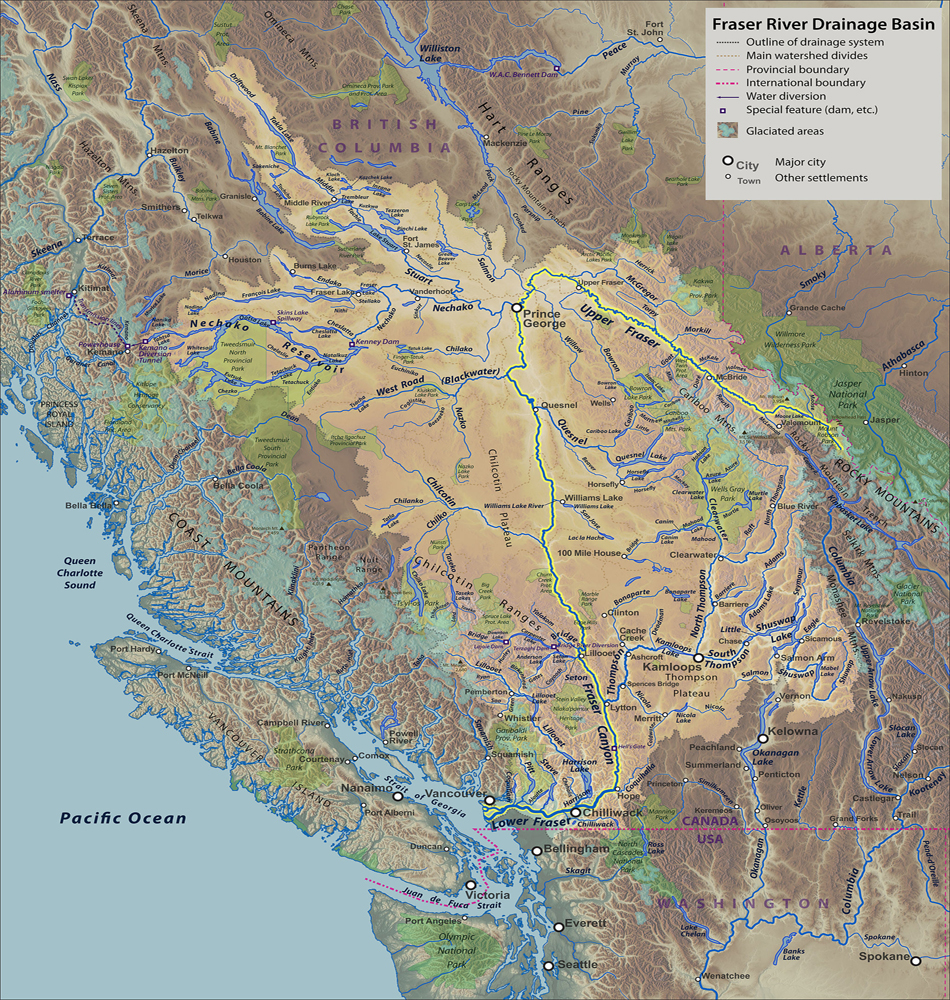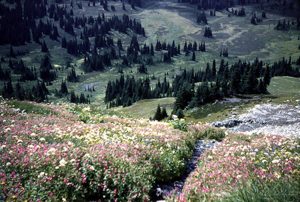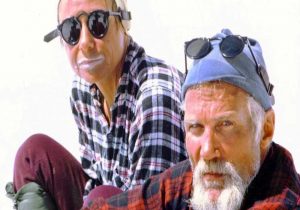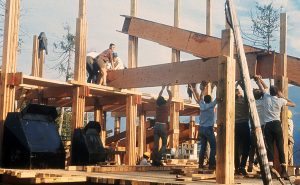2 – The History of Mountaineering in British Columbia
The Coast Mountains of British Columbia are a part of the traditional territories of the Squamish and Lil’wat First Nations. The mountains went unexplored by Europeans until the Nootka Crisis in 1789 brought the Spanish and English to the brink of war. Captain George Vancouver was tasked with exploring and mapping the Pacific Northwest coast following the crisis. Over the course of the next century, the settlement of the Pacific coast by Europeans focused on the fertile river valleys of the Fraser and Columbia Rivers. Mountaineering by European settlers did not begin until the late 19th century and focused on the mountains located across Vancouver Harbour on the North Shore.
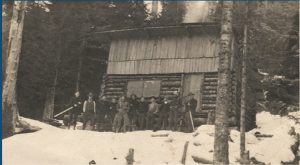
The first BCMC Club Cabin in 1910 before the covered porch was added to the Cabin on Grouse Mountain.
The North Shore Mountains were the birthplace of two mountaineering clubs, the British Columbia Mountaineering Club (BCMC) in 1907 and the University of British Columbia’s Varsity Outdoor Club (UBC-VOC) in 1917.
During the first few decades of the century most climbing on the west coast was limited to mountains very near Vancouver. One notable exception was the first ascent of Mount Garibaldi in 1907.[1]
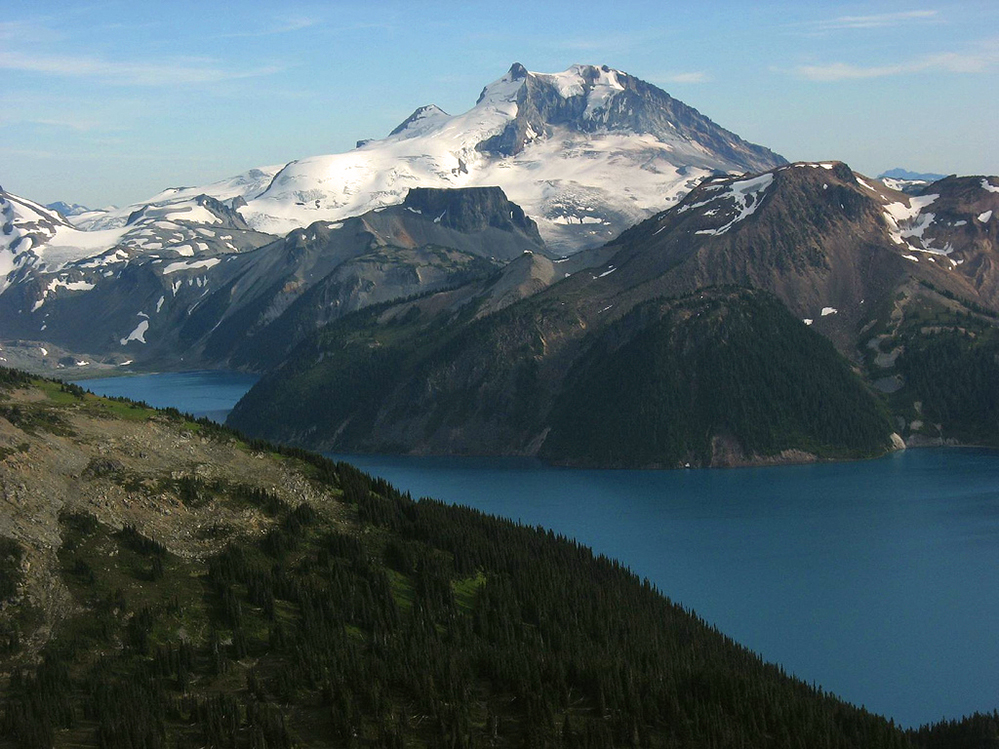
Mount Garibaldi (2,678m) is the highest peak within Garibaldi Provincial Park and was the first mountain outside of the North Shore Mountains ascended by the BCMC in 1907.
The BCMC and UBC-VOC shared similar beginnings, with both building club cabins on Hollyburn, Grouse, and Seymour Mountains. They both worked to promote the enjoyment of outdoor activities and the protection and conservation of mountain environments. The Provincial government designated the Garibaldi region a provincial park in 1926 as a direct result of a letter writing campaign conducted by BCMC members.
In fact, if you read the history, you find out that some of the members stayed during the Depression, used them as living quarters. They couldn’t live, afford anywhere else.[2]
Following the two World Wars and The Great Depression, the mountaineering clubs’ memberships and participation suffered from supply shortages and the limited access to disposable income.
Infrastructure development in the 1950s provided road access to Mount Seymour’s ski area, which meant members no longer needed to use the club cabins to access the ski areas on the North Shore.
Audio clip with transcript: Plummer Hut
Martin and Esther Kafer[3] arrived as part of an influx of new immigrants to British Columbia following World War II and they, along with other newcomers, helped reinvigorate the BCMC.
With the advancement of climbing gear and technology, the clubs were able to climb more technical routes and explore further into the Coast Mountains. New provincial parks, recreational areas, and highways led both clubs to explore new homes for their cabins.
In January 1966, Whistler Mountain officially opened as a ski resort. The UBC-VOC decided to build their new club cabin in Whistler because it would provide access to more ski terrain, as well as backcountry access for climbing and mountaineering expeditions in the Coast Mountains.
The BCMC chose to explore new shelter designs for huts to be built in more remote locations and in the Coast Mountain alpine environment.
[1] Scott, Chic. Pushing the limits: the story of Canadian Mountaineering. Calgary, AB: Rocky Mountain Books, cc2000. Pg. 69.
[2] Martin and Ester Kafer. Oral Interview transcript, June 24, 1997; Conducted by the British Columbia Mountaineering Club; Source: North Vancouver Museum and Archives; Date: June 24, 1997.
[3] Oral Interview with Martin and Ester Kafer; Interviewer: Jeff Slack; Source: Whistler Museum and Archives Society; Date: 2013.


